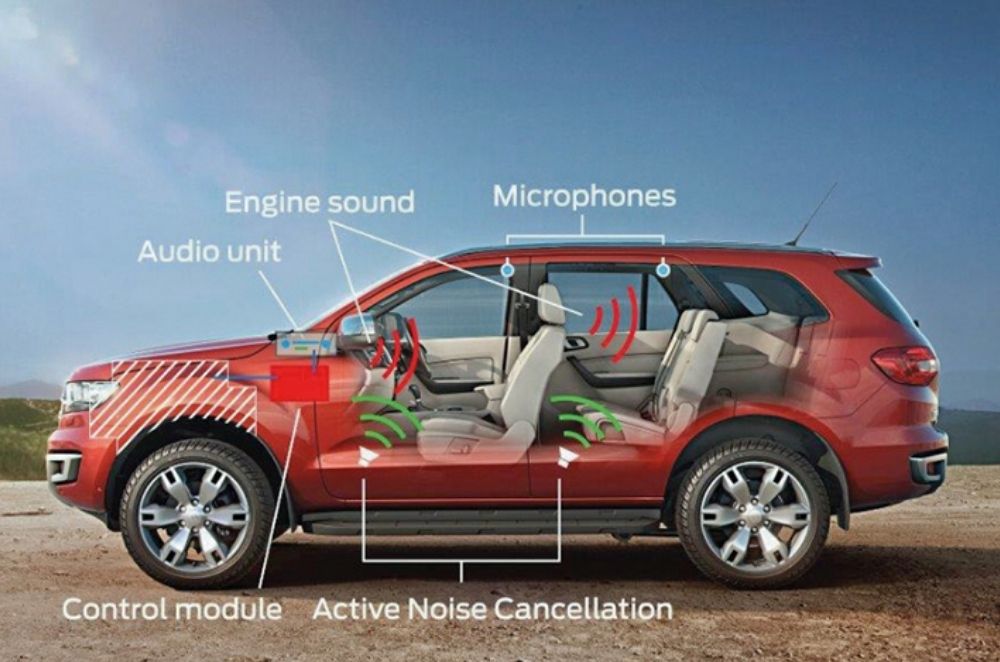
Active noise cancellation (ANC) is a nifty feature that most are familiar with through headphones. First seen in commercial airline headsets, the technology has existed since the 1980s.
Its vehicle-related applications are more recent, but it holds the promise of changing the way we use our cars in the future. Let's explore how active noise control technology integrates with today's vehicles and why the feature could be here to stay.
What is active noise cancellation?
Active noise cancellation or active noise control refers to a set of techniques for reducing unwanted sound by introducing another sound designed to cancel the first.
ANC for headphones works largely the same way as it does for cars. There are one or several microphones that detect unwanted environmental sound. The sound goes through a dedicated digital signal processor (DSP) or control module, which then determines the best opposing sound to emit. Everything happens in real-time, as the system detects, adjusts, and cancels out ambient noise at a constant pace.
Ideally, the result is a quieter cabin that adequately blocks engine noise and road sounds. It's essential to note that passive voice control exists as an engineering and design technique that helps reduce interior noise physically. Some automakers use both active and passive noise control in their systems, while others stick with purely active or passive.
Cars with active noise control

ANC used to be limited to high-end and luxury cars. As the technology became more widespread and cost-effective, manufacturers began equipping their models with digital noise control capabilities.
Ford is perhaps among the best-known automakers using ANC today. Notably, the Everest has three sensitive microphones that pick up engine noise before using speakers to play opposing sound waves. This system is reinforced with harmonious noise-reducing features like acoustic glass and hydraulic engine mounts.
Apart from Ford, several other brands have also introduced noise control technology. Hyundai, for one, has the Road-Noise Active Noise Control (RANC) feature available on the Genesis GV80. Granted, that's a premium vehicle, but Hyundai's use of cutting-edge sound techniques deserves praise.
The company has found a way to achieve effective noise control without the aid of physical design. The embedded DSP does nearly all the work, using complex algorithms to deliver a quieter and more comfortable ride.
Hyundai is already beginning to integrate RANC with its other innovations, like the Separate Sound Zone (SSZ) audio system. SSZ produces an acoustic field around the vehicle, allowing each occupant to hear isolated sounds. This unlocks features such as individual music control, phone call privacy, and personalized navigation.
With the ingenious appeal of active noise control, it's clear that it's only a matter of time before the feature becomes mainstream. Over the next few years, we can expect more vehicles to come equipped with the ANC out of the factory. Top brands like Honda, Nissan, and Chevrolet are currently exploring the feature in varying capacities, and many more will likely follow. For now, we'll have to watch ANC as it finds its way into more of our cars sooner than later.
Latest Features
-
The 6 things every Ford Ranger must pass before it leaves the factory / Featured Article
Every Ford Ranger, from the base model to the Ranger Raptor, goes through a full inspection process before it leaves the factory. This includes six steps that make sure it’s ready to drive a...
-
Which GAC AION EV is best for your everyday lifestyle? / Featured Article
The GAC AION lineup has something for everyone, maybe you're after space, speed, or just a smooth city drive. Here's a quick breakdown of which model might work best for your day-to-day life...
-
The AutoDeal Awards 2024: Celebrating excellence in the auto Industry / Featured Article
The AutoDeal Awards 2024: Celebrating excellence in the auto Industry
Popular Articles
-
Cheapest cars under P700,000 in the Philippines
Jerome Tresvalles · Sep 02, 2024
-
First car or next car, the Ford EcoSport is a tough package to beat
Jun 18, 2021
-
Car Maintenance checklist and guide – here’s everything you need to know
Earl Lee · Jan 12, 2021
-
Most fuel efficient family cars in the Philippines
Bryan Aaron Rivera · Nov 27, 2020
-
2021 Geely Okavango — Everything you need to know
Joey Deriquito · Nov 19, 2020
-
Family cars in the Philippines with the biggest trunks
Sep 20, 2023
-
Head to head: Toyota Rush vs. Suzuki XL7
Joey Deriquito · Oct 28, 2020
-
Why oil changes are important for your car
Earl Lee · Nov 10, 2020
-
2021 Kia Stonic — What you need to know about it
Joey Deriquito · Oct 16, 2020
-
Top 7 tips for buying a used car in the Philippines
Joey Deriquito · Nov 26, 2020



